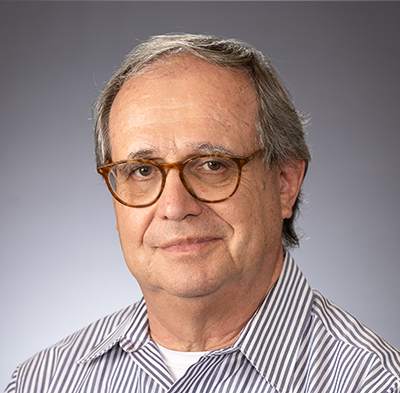Choose Your Language
Request a Quote
2025 Packaging Trends from a Converter Perspective
- Home
- Blog
- End Markets
- 2025 Packaging Trends from a Converter Perspective
| April 14, 2025

2025 Packaging Trends from a Converter Perspective
As we step further into 2025, packaging continues to evolve at a rapid pace due to changing technology, shifting consumer preferences, and growing environmental awareness. One of Nexeo Plastics’ corporate accounts—active in both rigid and flexible packaging applications—recently identified key trends that are reshaping the packaging landscape. Here’s a look at four of the most influential developments driving change from a converter’s point of view.
Artificial Intelligence (AI) is no longer a futuristic concept—it’s happening now, and it’s revolutionizing packaging.
According to Emergen Research, the global AI in packaging market was valued at $2.31 billion in 2022 and is expected to grow at an eye-popping CAGR of 55.7% over the next decade. AI is being integrated across operations, from improving supply chains and minimizing waste to refining quality control.1
Retail giants are already tapping into its power. Walmart uses AI to enhance inventory management and track consumer buying patterns, while Amazon leverages AI to create “right-sized” packaging—reducing shipping materials and supporting sustainability efforts.2
Converters are also getting in on the action, using AI to design prototypes and to virtually test new packaging concepts—cutting down R&D time and cost while encouraging innovation.
Consumers today are navigating a unique tension: they want to eat and live healthier—but they’re not ready to give up life’s little indulgences. This push and pull is fueling new opportunities for brands and package converters alike.
Emerging health trends—such as the rise of weight-loss drugs and nutrient-focused eating—are reshaping product offerings. Brands like Conagra are updating labels to highlight nutrition benefits, while companies like Nestlé are launching entirely new products to meet consumers’ changing expectations.3
At the same time, novelty is still key. Collaborations like Coca-Cola + Oreo show how brands are capturing attention through unexpected partnerships and bold new flavors. Packaging must balance function with fun, clearly signaling both health benefits and that irresistible treat-yourself factor.4
Consumers have become more educated—and skeptical—when it comes to sustainability claims. They want real, measurable impact, not just buzzwords.
Enter sensible sustainability—a demand for transparency that’s influencing how companies package, label, and promote their goods. With increasing pressure to comply with Extended Producer Responsibility (EPR) laws and fulfill public sustainability commitments, brands are turning to tools like QR codes to bridge the gap.5
These scannable codes help educate consumers about end-of-life disposal and recycling options. And the payoff is real: according to Euromonitor International, Passport Sustainability, products with verifiable sustainability claims are outperforming others by 1.5%—with pet care packaging leading the charge.6
QR codes—also known as 2D barcodes—are no longer a novelty. They’ve become central to the packaging experience, unlocking rich product information and deepening consumer engagement.
A GS1 survey found that 79% of shoppers prefer products with scannable barcodes. And by 2027, retailers around the globe are expected to accept 2D barcodes at checkout, according to GS1.7
Beyond the checkout line, these codes are revolutionizing packaging. They help brands share sourcing details, explain sustainability efforts, improve traceability, and provide dynamic, real-time information—all in one simple scan. For converters and brands alike, 2D barcodes represent a powerful bridge between physical packaging and the digital experience.
Looking Ahead
As converters adapt to these powerful shifts in packaging—from AI and health-conscious innovation to sensible sustainability and barcode technology—it’s clear that 2025 is not just about meeting consumer expectations, but exceeding them.
By staying ahead of these trends, brands and their packaging partners have the chance to create smarter, more engaging, and more responsible packaging solutions that resonate with today’s consumers—and tomorrow’s.
Sources:
1. https://www.emergenresearch.com/industry-report/artificial-intelligence-in-packaging-market
2. https://www.cleverence.com/articles/business-blogs/how-ai-powered-inventory-management-helps-amazon-and-walmart-reduce-stockouts/
3. https://www.fooddive.com/news/conagra-brands-adds-glp-1-friendly-label-to-some-healthy-choice-meals/735484/
4. https://www.canny-creative.com/news/coca-cola-and-oreo-join-forces/
5. https://sustainablebrands.com/read/how2recycle-localized-packaging-disposal-instructions
6. https://www.euromonitor.com/press/press-releases/september-2024/three-in-five-companies-implemented-a-sustainability-strategy-in-2024-euromonitor-
7. https://www.gs1us.org/industries-and-insights/media-center/press-releases/gs1-us-celebrates-50-year-barcode-scanniversary

Jose Angulo | Senior Technical Service and Development Manager
Jose is a Senior Technical Service and Development Manager with a main focus in Extrusion, Blow Molding, Roto Molding, and Film. Jose is also involved in sustainability and circular economies, as well as developing nylon films applications. He started in Dow Chemical in 1974, ARCO Chemical, and ALM Group, which amounts to over 50 years of experience in the plastics industry. Jose has developed many formulations and additive packages being presently used in the agricultural, sustainability, and the high barrier film and blow molding industries.
Follow me on: LinkedIn